Hiring the right hands lifted our weakest region
.avif)
Mark and Allen share how they transformed Nexient's weakest region into its fastest-growing in just one year.
By the end of 2018 our Central region was our smallest, and it was shrinking. When I met with my Central region leader they rationalized that “companies in the Midwest simply won’t pay what companies on the coasts will pay.” This may have been correct based on the approach they were taking. If you are selling staffing or staff augmentation, then the whole value proposition to your prospects is cheaper labor. Our Midwest labor at the time was cheaper than the East and West Coast markets. But what I really wanted was to be selling something more valuable than cheap labor. What this conversation was telling me was that we weren’t selling ourselves as a strategic partner. We were just looking to fill open labor spots. I knew we had to try something different.
Fate intervened and I fortuitously received a call from Allen. I had tried to hire him in 2016, but lost him to a better position elsewhere. He and I had stayed in touch and this time I was lucky enough to get him to join the company.
I believe much of the services industry is based on building long term relationships. Invest time in maintaining contact with good people and your connection could well benefit you and your business down the line. I consider myself very lucky to have kept in touch with Allen. Under his direction the Midwest quickly became our fastest growing region. Read on to hear Allen’s approach in his own words.
Allen Debes shares his winning approach
Mark taught me that you are either very successful, or you learn a lot. I love that phrase and use it often. For almost three years I had learned a lot at the company that had offered me the “better position” and was rather sheepish when I called Mark asking if he had any openings. Mark has said in this article that he felt lucky to have kept in contact with me. I feel the same way. Fate and timing created the right thing at the right time with the right people.
Nexient had moved along a lot since we'd first met in 2016. Mark had made some critical structural changes which interested me:
- Launching a new company name
- Hiring Andy Lin (consulting head) and Jenna Chamra (design head) to add a product and design studio alongside our core engineering service
- Devising compensation models more attractive to someone with my experience (enough base to make it work, uncapped upside, B-shares)
Mark also presented some additional propositions which excited me:
- In Mark's words, “I need someone who can speak midwestern and specifically Minnesotan”. Nexient had a Midwest-based client that at one point was 76% of their revenue. I absolutely loved that challenge, along with the challenge of showing that Nexient’s emerging value proposition could be sold to clients in the Midwest at scale.
- The role I was being considered for was senior client partner to run key accounts in the Midwest. However during the hiring process Mark called me to revise the offer letter. He said, “We are giving you a promotion before you even start. We’ve decided to make you a General Manager.” We then discussed the states the role would cover, all of which created a platform of opportunity.
Phase 1 – Client and team immersion and orientation
On taking the GM reigns in January 2019 I made it my mission to do everything possible to get to know our clients and teams.
My number 1 job was to immerse myself into our existing clients' businesses, of which there were not very many. This was actually helpful, as it meant I could meet with all of them, early and often to understand their needs. This included as much travel as it took and taking every meeting in-person whenever possible. I listened, learned and shared back what I was hearing, asking to meet others at the client, and so on. I even invented a saying that Mark started to repeat: “Show up and give a shit… a lot.”
I also immersed myself in Nexient’s delivery teams serving those clients. I spent the hours (and hours) needed to learn what we do for our clients. By extension I built deep trusting relationships with those teams. I determined among them who were the best teachers to help me gain the expertize to understand and articulate what we do in custom product design and development. This built a buzz and trust across all client delivery teams that I “got it”.
I chased EVERY opportunity that came my way. I didn’t care who it was or where it was in the 9-state region we established for Central. I didn’t let lead-scoring or any rationalization get in the way of action. The custom software problem was ubiquitous for clients large and small, and I trusted our delivery team, so I met with everyone. Leads came from my own relationships, efforts previously made by former sales leaders and staff, the current executive or delivery team in Ann Arbor, or simple cold-calling. It did not matter. Mark eventually came to say “you gotta kiss a lotta frogs” - no truer words have been spoken.
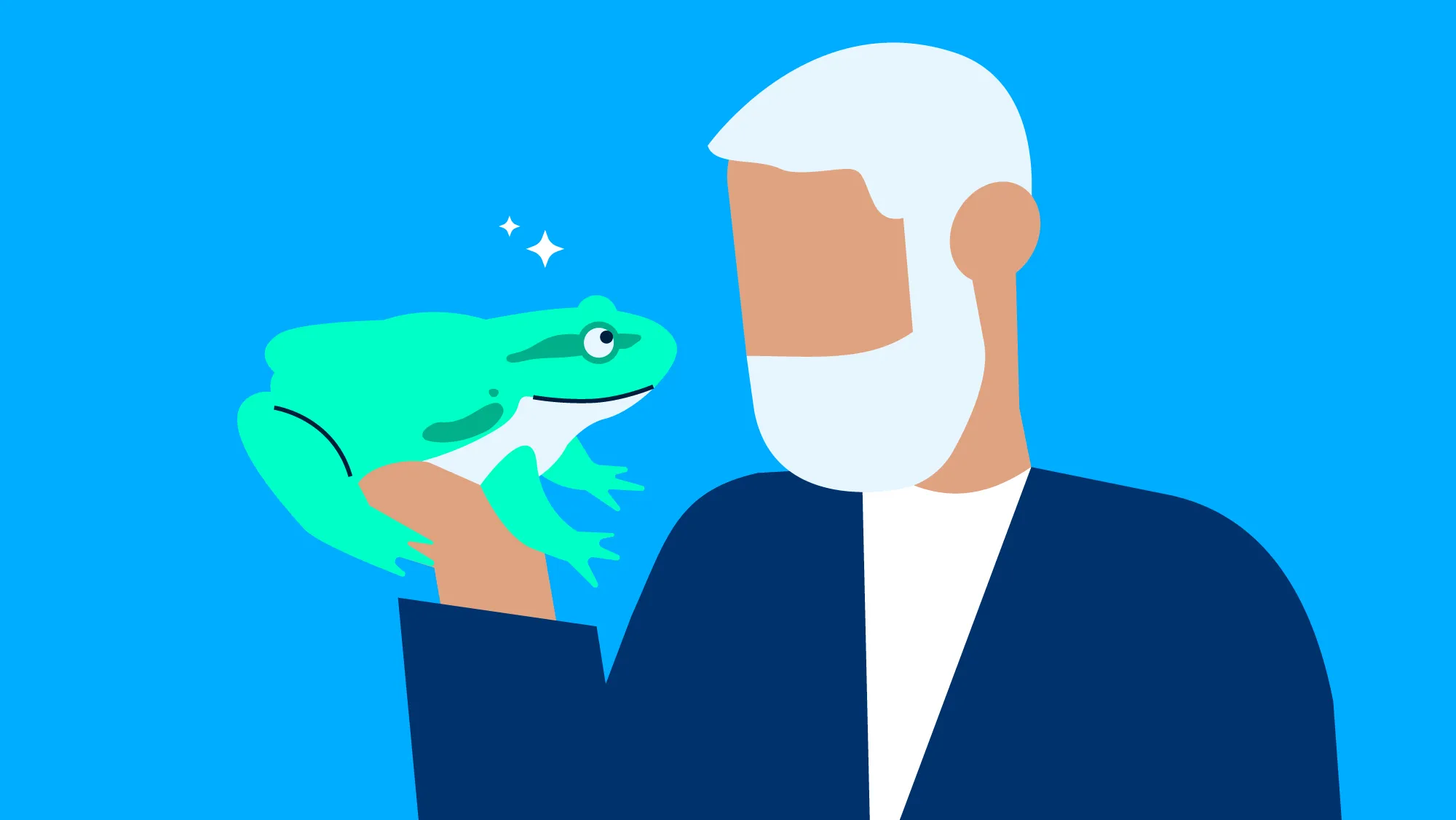
Phase 2 – Close deals, personally, with the indirect team
As interest peaked with existing and new clients, and my knowledge of our GTM and capabilities became more deeply understood, I relentlessly persisted in moving Master Service Agreements and Statements of Work forward. At this stage in our development our team was very lean. Everyone was very “hands on” in doing all of the tasks required to build the business.
An effective sales motion began to emerge:
- Understand and diagnose the prospective or current client need
- Bring that outline to the practitioner leaders
- Meet with the client and the practitioner(s) to deepen understanding
- Propose a team and pricing that could help
In the process, a site tour of our delivery center in A2 also became an important tactic when closing deals. Existing and new clients loved it. (Fun fact: A2 is the nickname for Ann Arbor, MI.)
I also leveraged the executive team as much as possible. Whether it was Andy (consulting), Jenna (design), Colin (engineering delivery), Nate (engineering), Keith (engineering), or Mark as CEO, pragmatically inviting them into the sales motion paid dividends. And they were gracious enough to know we were not going to win them all, never complaining about their time being wasted (which sometimes it was). I remember one trip where Mark and I met in Chicago, rented a car and drove through IL, IN and MI to meet as many clients and prospects as we could. (Mark tried to get me to eat dark chocolate and I was trying to cut pounds.) It was on that trip that timing got in the way of me being onsite at DTE, a critical prospective client in Detroit. Colin went for me and it worked! They are still a big client to this day.
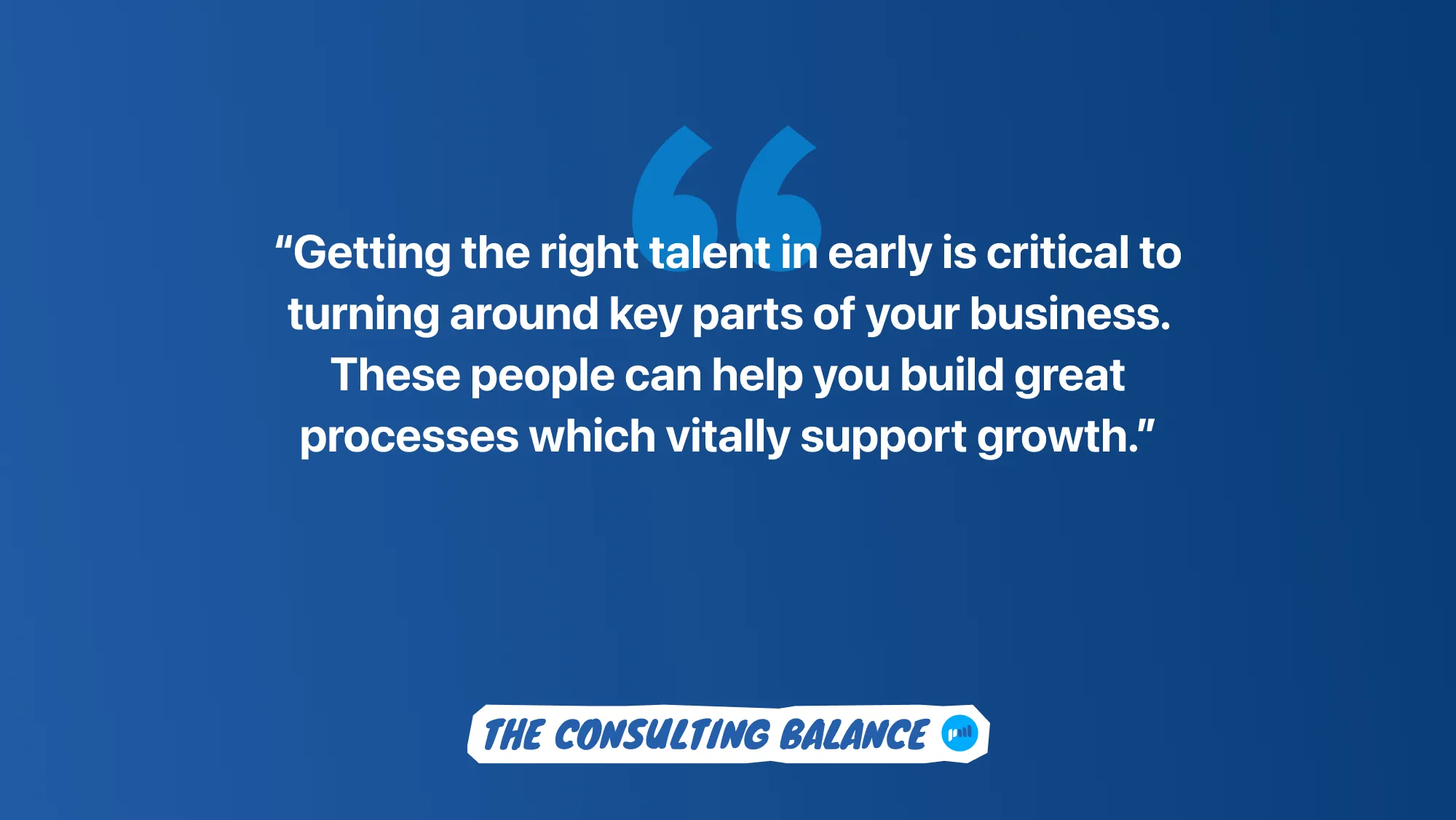
Phase 3 – Experimentally scale a regional team
With things starting to gain momentum I then concentrated on how we could take our offering to the next level. It’s at this point in a company’s evolution that you need to evaluate what success looks like. I’ve always loved the concept of a “good to great” scale. This is critical to growth. Anything below “good” will just not do. This means facing some hard truths. In our case it meant making some fundamental changes with our biggest client in MN (the one who at the time was 76% of our revenue). They thought we were good but despite all the work we’d done to rebrand and sell them a greater offering, they saw us in a way that would not allow us to grow there for some time to come. That ~5M revenue needed serious care and feeding so Mark, Andy and the board allowed me to hire a consulting director in MN to provide that care. A more conservative or untrusting approach here would have seriously curtailed the opportunity to build.
I also began to understand the difference between hunting and farming. On a spectrum, consultants in the field (sales, service, delivery) gravitate towards hunting or farming. Another way of putting this is landing or expanding. Some enjoy selling more than delivering and visa versa. Deeply understanding each human and their tendencies in our business is essential.
Here is what we built in each region:
- GM - This person needed to be a practitioner and could come from engineering, product management, or design, but needed deep experience with building software. They also needed to be very focused on revenue growth. Essentially they would be a hunter and a farmer. In the Central region this was me.
- Hunter - this is typically a sales person who is good at initiating new client relationships. These were typically not practitioners on our team and we had one per region.
- Farmers - these were practitioners who were leading client engagements. Depending on seniority, they might be a consulting director (could be in product, design, or engineering), or if they were more senior, they would be a client partner. Client partners would lead and grow client relationships in addition to being practitioners.
As we landed more and more accounts in 2019, and expanded pipeline and headcount at almost all existing accounts, we decided each region needed one hunter and increasing numbers of farmers as we grew. Luck and timing led to us finding both for the Central region at a time when it was not obvious that we should make these investments. But we did, and this was once again a critical moment where a more conservative decision would have held us back.
Once I felt confident our approach to Midwest growth was going well, I decided it was time to capture our next whale. Sometimes you have to create your own luck so with my “chase everything” mantra firmly in place, I hightailed it to NYC in January 2020. I met personally with a key future buyer of our services at scale, who eventually and rapidly grew to around 20M a year. All of the above efforts across all three phases led us to expanding rapidly in service to this account, allowing the region to grow at a breakneck pace, in a sustainable way.
Some closing thoughts from Mark
Thank you Allen for sharing your story from the Midwest. When we think of tech services we tend to visualize the coast, but as a truly 100% US company, growth in the central regions was hugely important to Nexient too. Without you, and the amazing people behind you, Nexient wouldn’t have enjoyed half the success it attained.
This takes me to some final thoughts on people. Getting the right talent in early is critical to turning around key parts of your business. These people can help you build great processes which vitally support growth. As business titan Ray Dalio once said, “While there is nobody in the world who will share your point of view on everything, there are people who will share your most important values and the ways in which you choose to live them out. Make sure you end up with those people.” I consider myself very lucky to have ended up with Allen and all of the great people he has mentioned.
Growing your business takes a lot of passion, time and energy:
- Get to know every aspect of your clients' businesses and every stakeholder within them
- Become an expert in what each of your teams deliver
- Qualify every single lead that comes your way
- Push hard to close deals, drawing on every part of your business where relevant
- Always investigate how and where you can scale
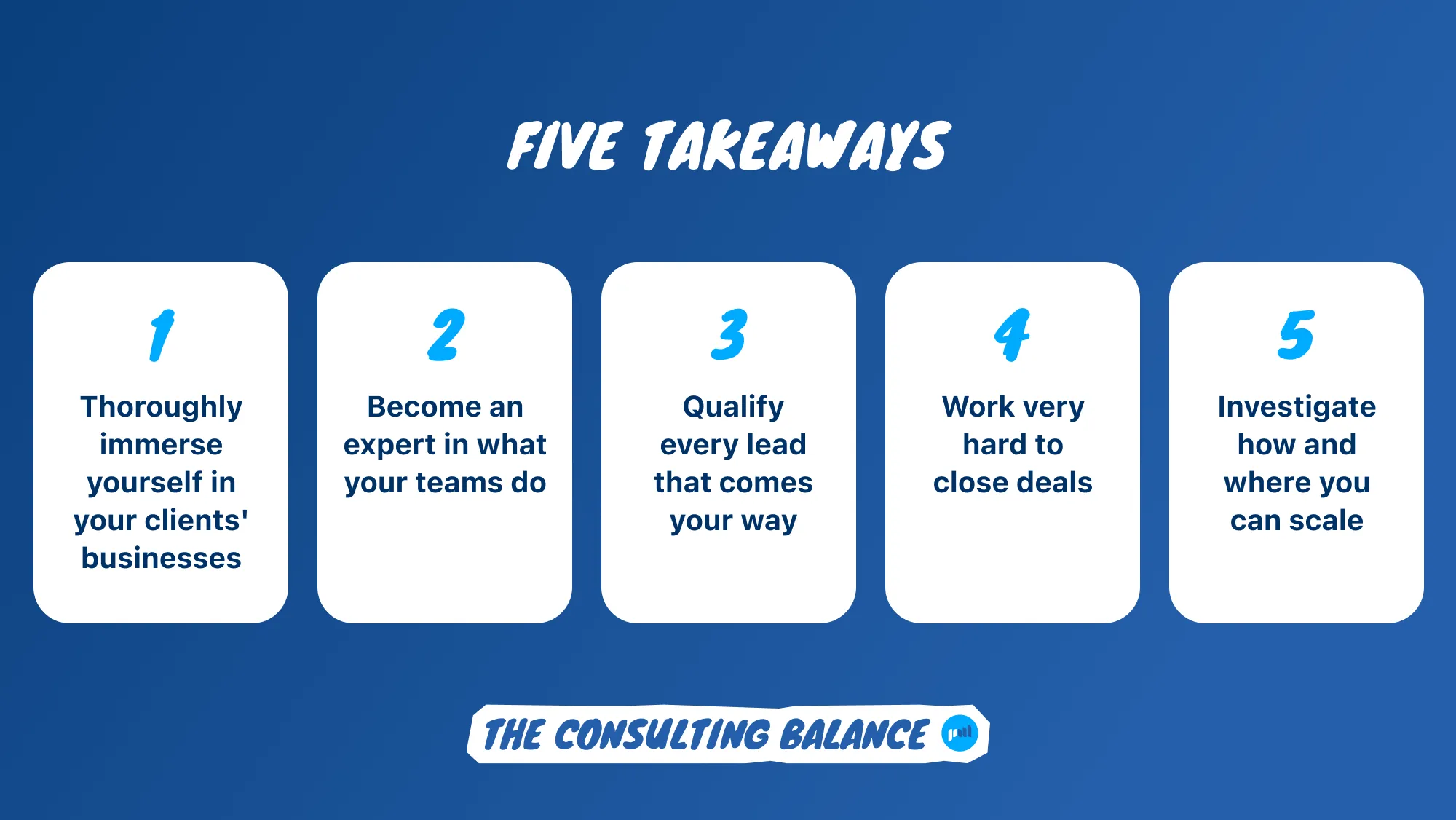
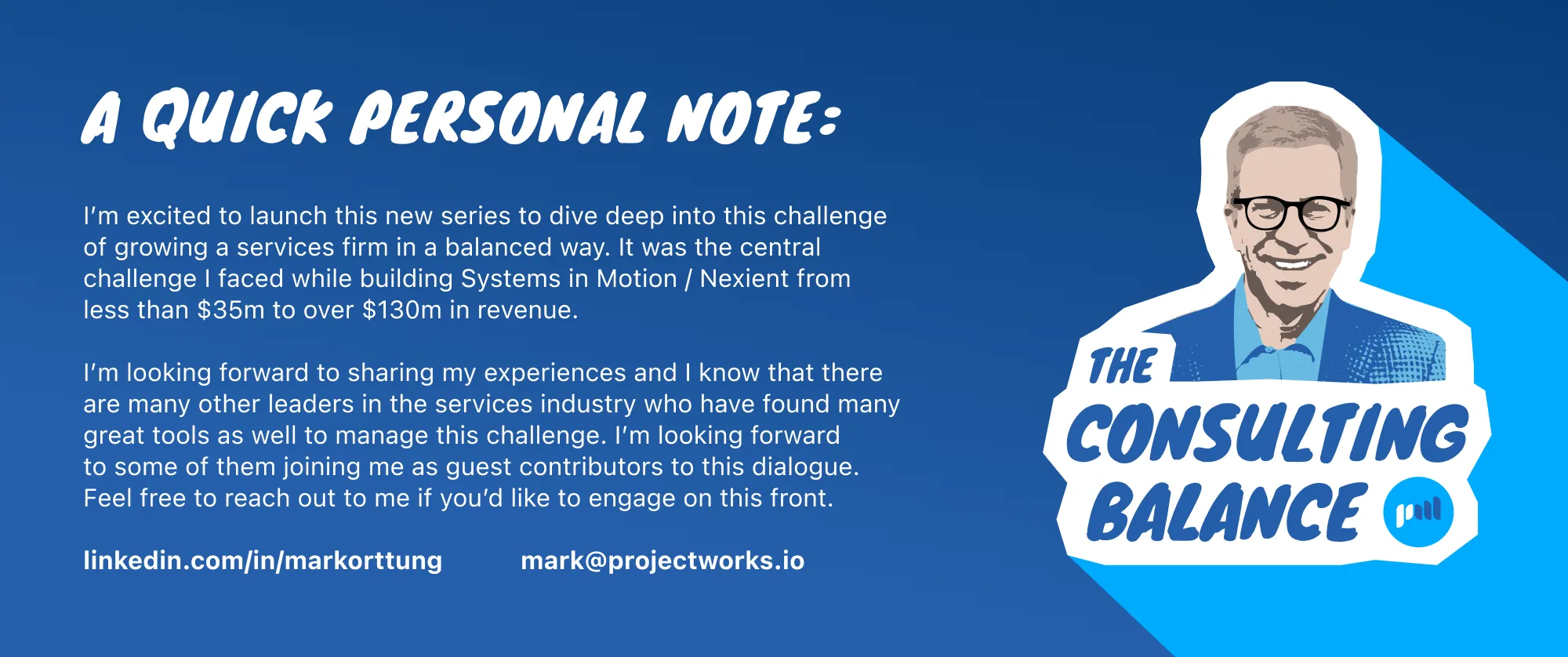
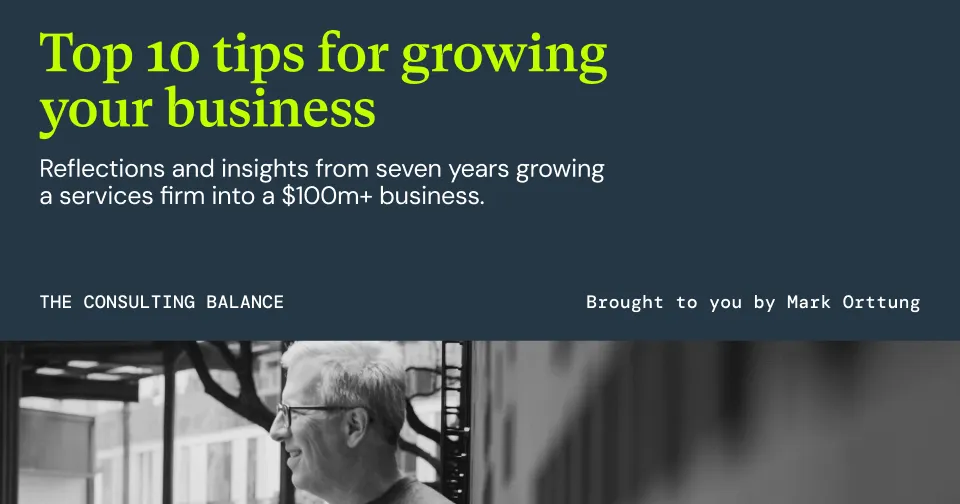
.webp)
